South Africa’s Next Energy Challenge: A $21 Billion Grid Upgrade
(Bloomberg) -- South Africa is facing a monumental challenge as it seeks to end years of rolling electricity outages that have hobbled the economy: It needs to build and fund a 390-billion-rand ($21 billion) expansion of the national grid so it can connect more power plants.
The transmission system is owned, managed and maintained by Eskom Holdings SOC Ltd., which supplies more than 80% of the country’s electricity and has failed to properly maintain its plants or expedite the process of building enough new ones to avert energy shortages. The state utility plans to build 14,218 kilometers (8,835 miles) of power lines over the the next decade, more than three times what it has installed over the past 10 years. It will also have to increase its transformer capacity six-fold and build other infrastructure.
The power cuts, known locally as loadshedding, have curbed output, stoked unemployment and limited the annual economic growth rate to an average of less than 1% over the past decade — key campaign issues heading into May 29 elections. In its election manifesto, the ruling African National Congress said it would “prioritize investment in expanding the transmission grid so that more energy, including from renewable sources, can be supplied,” a pledge echoed by its main rivals.
Funding the expansion appears beyond Eskom’s reach. The company’s coffers were systematically looted during former President Jacob Zuma’s almost nine years in office and it amassed more than 400 billion rand in debt before the National Treasury stepped in with a conditional bailout that severely constrains the loss-making utility from taking on additional loans.
The failure to invest adequately in the grid has created “a real emergency,” said Brian Day, chairman of the South African Independent Power Producers Association. The construction of new lines and substations is proceeding too slowly and needs to be ramped up, he said.
Inadequate transmission infrastructure is already frustrating efforts to increase the electricity supply. After calling for bids that would double wind-power purchases from private contractors, the government failed to award any of the contracts because the projects couldn’t be connected.

Grid constraints also pose a risk to an estimated 66 gigawatts of wind and solar plants that are already at various stages of development in South Africa, Raine Adams, an analyst at fund manager Allan Gray, wrote in a note to clients.
South Africa began developing its electricity system more than a century ago, building power stations adjacent to rich coal deposits in the northeast of the country to provide the energy needed to extract gold and other minerals. Transmission lines were later added to connect up other parts of the country.
Over recent years, several solar and wind plants constructed by private developers have been connected to the grid but link-ups in the areas best suited for such facilities have run out — an issue that needs to be resolved if the country is to meet its commitments to lower its greenhouse gas emissions.
Eskom listed “statutory approvals and procurement turnaround times, followed by capital budgets,” as the biggest obstacles it faces in expanding the grid. Securing the land rights to lay cables and tackling the organized crime that pervades South Africa’s construction industry are also potential challenges, it said.

Even if it could raise the money, the utility’s ability to roll out the required additional lines would remain in question, given its tarnished track record implementing other megaprojects, including the construction of two of the world’s biggest coal-fired plants. Announced in 2007, Medupi and Kusile were scheduled to be completed within eight years at a total cost of 163 billion rand, but the likely final price tag has since ballooned to more than 460 billion rand and both still aren’t running at full capacity.
“The grid delivery will be a challenge, but steps are being taken to learn from the experiences from the Medupi and Kusile projects, and to avoid repeating the mistakes,” Eskom said, adding it will consider outsourcing part of the work. The utility will return to the capital markets beyond its 2026 financial year, and expects to finance transmission infrastructure using a blend of equity and debt.
“At present, Eskom is not financially sustainable on a stand-alone basis and financial institutions are unlikely to provide additional funding in the absence of a government guarantee or other form of credit enhancements,” said Lindani Vezi, a listed credit investment analyst at Cape Town-based Futuregrowth Asset Management.
South Africa’s cabinet has endorsed the creation of an Independent Transmission Projects Office to help garner private financing for the grid, a model that’s been used in countries such as Brazil and India, according to Electricity Minister Kgosientsho Ramokgopa.

While he sees an “insatiable appetite” among private companies to invest in transmission, multiple procedural delays — including a protracted breakup of Eskom into generation, transmission and distribution units that would help facilitate access to the grid — have stalled the process.
The ANC is adamant the transmission network won’t be privatized.
“Transmission projects are often strategic assets and so financing by private investors can be seen as a loss of control to the sponsoring country,” said Sanjeet Sanghera, head of grids and utilities at BloombergNEF. “There is a need for a model that strikes the right balance.”
Hilton Trollip, an energy research consultant at the University of Cape Town, said that despite anticipated delays and resistance to private sector participation in the grid, some progress has been made in easing regulations and improving the utilization of the existing grid.
The government’s “recent flexibility gives a sliver of hope,” he said.
©2024 Bloomberg L.P.
KEEPING THE ENERGY INDUSTRY CONNECTED
Subscribe to our newsletter and get the best of Energy Connects directly to your inbox each week.
By subscribing, you agree to the processing of your personal data by dmg events as described in the Privacy Policy.
More renewables news
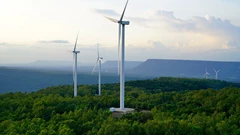
WEC Energy Offered $2.5 Billion US Loan for Renewable Projects

With Trump Looming, Biden’s Green Bank Moves to Close Billions in Deals
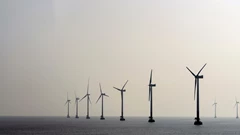
GE Vernova Expects More Trouble for Struggling Offshore Wind Industry

Climate Tech Funds See Cash Pile Rise to $86 Billion as Investing Slows
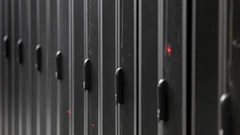
GE Vernova to Power City-Sized Data Centers With Gas as AI Demand Soars

Longi Delays Solar Module Plant in China as Sector Struggles
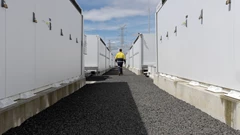
Australia Picks BP, Neoen Projects in Biggest Renewables Tender
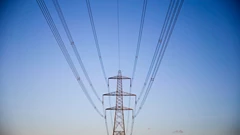
SSE Plans £22 Billion Investment to Bolster Scotland’s Grid
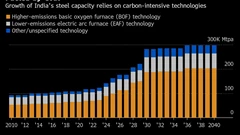
A Booming and Coal-Heavy Steel Sector Risks India’s Green Goals
















